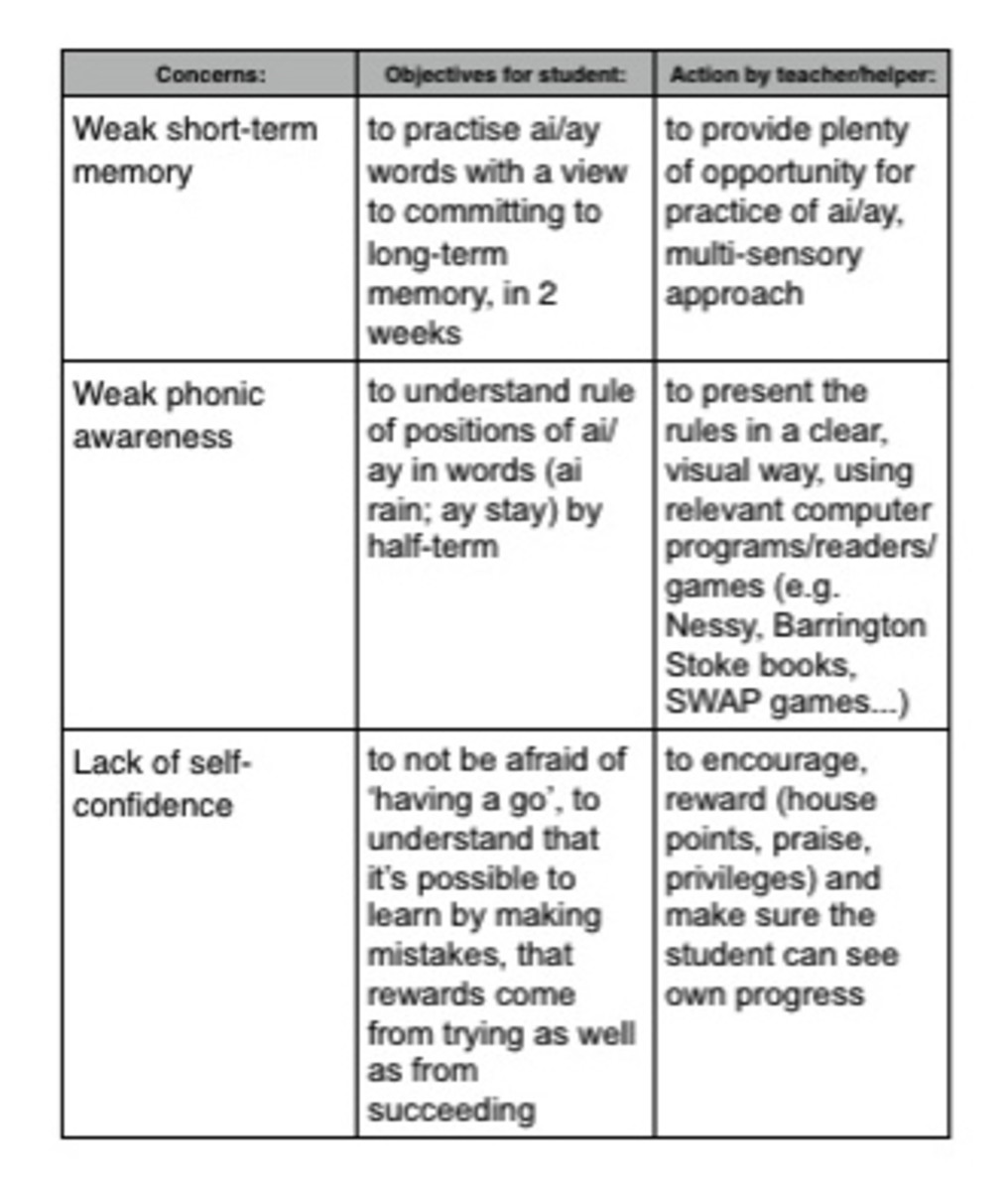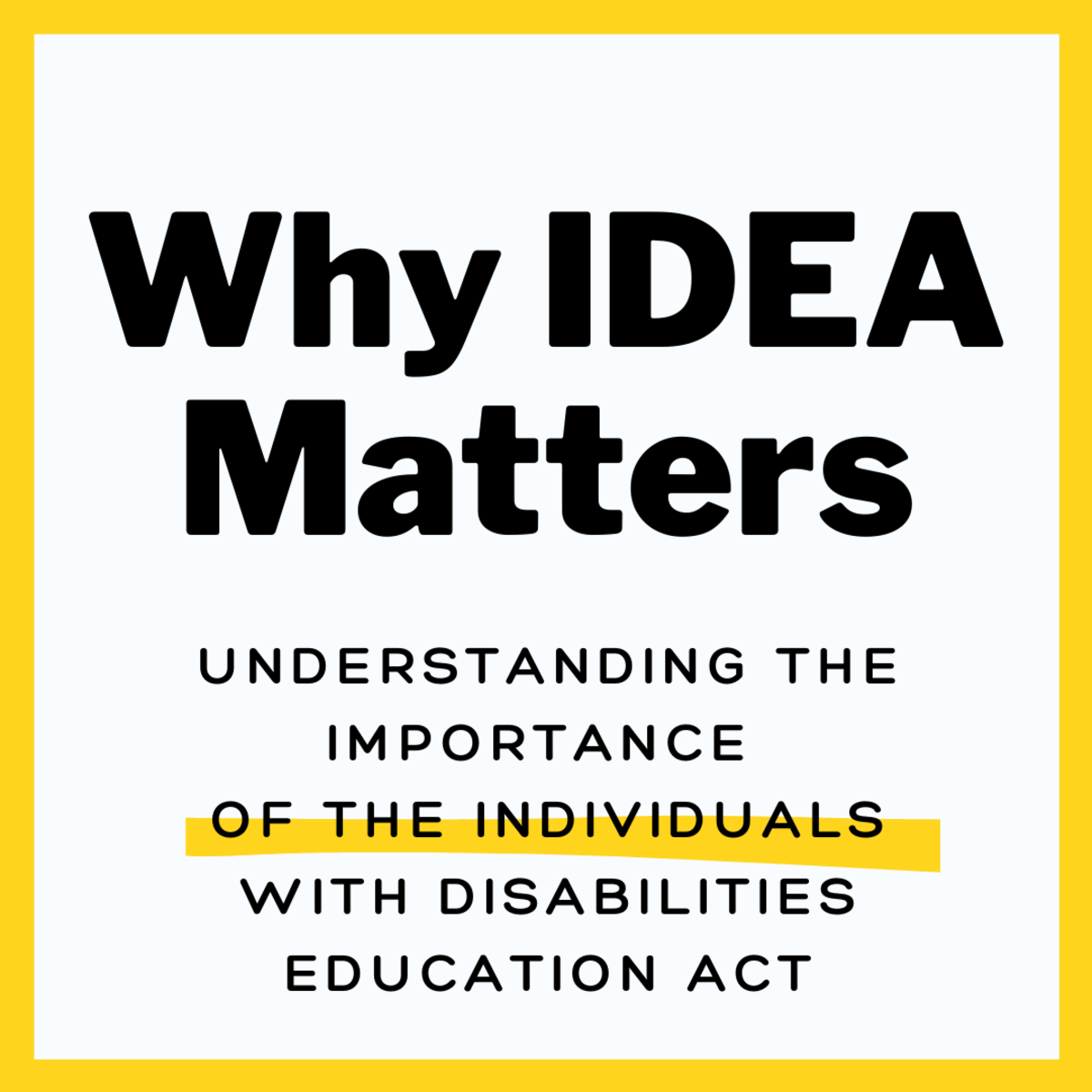Iep Vs 504: A Plain-English Parent Guide With Email Templates (2025)
Section 504, in Plain Language
What it is
Section 504 of the Rehabilitation Act of 1973 is a federal civil rights law. It says programs and activities that get federal money, and federal agencies themselves, cannot discriminate because of disability. That includes public schools, most colleges, hospitals, clinics, nursing homes, and many human-service programs.
Who is protected
A “qualified individual with a disability” is a person who has a physical or mental impairment that substantially limits one or more major life activities. People with a record of such an impairment, or who are regarded as having one, are protected too. Major life activities include learning, reading, concentrating, thinking, communicating, seeing, hearing, walking, breathing, working, and more.
What it requires in K–12
School districts must provide FAPE under Section 504. Here, FAPE means regular or special education and related aids and services designed to meet the student’s needs as adequately as the needs of non-disabled students are met. This is access and equal opportunity, not a “best possible” standard.
What it requires in health and human services
Recipients of HHS funds may not deny participation, create barriers to access, provide separate or unequal services, or limit employment opportunities because of disability. The detailed rules are at 45 CFR Part 84, and HHS’s Office for Civil Rights enforces them.
Recent updates
Agencies have refreshed 504 materials in 2024–2025, including HHS fact sheets and ED OCR guidance on FAPE and discipline. These do not change the core right to nondiscrimination, they clarify how schools and agencies must meet it today.
If you need help
You can file a civil rights complaint with the appropriate Office for Civil Rights. HHS OCR handles health and human services. ED OCR handles schools and colleges. Both offices publish filing instructions online.

Understanding 504 Plans in Education
504 plan: for students whose disability substantially limits a major life activity and who need accommodations or related aids and services so school is accessible. Focus is access.
A student can be thriving on paper and still qualify for a 504 plan if the disability creates significant effort, pain, risk, or loss of access behind those grades. The law protects access, not just grades.
Common real-world 504 examples
These are the kinds of students teams often consider for 504, even when report cards look fine.
-
High achieving with diagnosed anxiety
Straight As, but daily panic, nausea, and classroom avoidance. 504 supports could include predictable check-ins, a quiet testing room, short movement breaks, permission to step out to the counselor, and reduced-copy demands. Purpose is equal access without constant distress. -
ADHD without a need for special instruction
Work is strong, but time estimates are off and organization falls apart. Supports may include chunked tasks, extra time on long assessments, planner checks, and a second set of books. -
Type 1 diabetes
Student needs blood-glucose checks, snacks, water, restroom access, and flexibility for absences related to care. A 504 plan documents these health-related accommodations class by class. -
Migraine or seizure disorder
Learning is on track between episodes, but lighting, noise, or missed time create barriers. Plan might include reduced lighting, sunglasses, rest area access, test rescheduling, and attendance flexibility. -
Asthma or long COVID
Stairs, PE, or masks may require adjustments, plus access to medication and air quality considerations. -
Hearing loss with amplification
Academics are strong, but access suffers in group work and large rooms. Supports can include preferential seating, FM system, captioned media, and written instructions. -
Concussion recovery or orthopedic injury
Temporary but substantial limits on concentration, screen time, note-taking, or mobility. 504 allows short-term changes like reduced workload, elevator access, and rest breaks. -
GI disorders or continence issues
Needs immediate restroom access, water, nurse visits, and seating near the door, with privacy and reduced embarrassment. -
Specific learning disability that does not require specialized instruction
Student reads at grade level but needs text-to-speech for long passages and extended time for major exams to match peers’ access.

Let Us Know
Where are you in the 504/IEP process?
Classroom Poster Idea

IEPs in Plain Language
An Individualized Education Program (IEP) is a legally binding plan that delivers specialized instruction and related services so a student with a qualifying disability can make meaningful progress, not just get access.
A 504 plan focuses on access and accommodations. An IEP adds instruction that is adapted in content, method, or delivery. It comes with goals, service minutes, and progress reports. Teams meet at least annually to review and adjust.
Common real-world IEP examples
-
Dyslexia or another specific learning disability
Student struggles to decode and read fluently even with classroom supports. IEP provides explicit, systematic reading instruction, goal lines for accuracy and fluency, and accommodations such as audiobooks while skills grow. -
Autism spectrum disorder (ASD)
Strengths in knowledge but difficulty with social communication, flexibility, and sensory regulation that affects learning. IEP may include social skills instruction, visual schedules, structured teaching, speech therapy, and OT for sensory strategies. -
ADHD with educational impact
Organization and sustained attention prevent progress even with accommodations. IEP adds targeted executive function instruction, goal setting, and small-group or resource time to teach planning and task initiation. -
Speech or language impairment
Articulation, receptive language, or expressive language significantly interferes with classroom participation. IEP includes speech-language services with goals for specific sounds, vocabulary, comprehension, or pragmatic language. -
Emotional disturbance or significant mental health needs
Anxiety, depression, or behavior patterns impede learning across settings. IEP adds counseling, behavior intervention planning, and explicit instruction in coping and replacement skills, with data-based goals and check-ins. -
Hearing or vision impairment
Student needs direct instruction from a teacher of the deaf or teacher of the visually impaired, access technology, and goals for listening, self-advocacy, or Braille. General accommodations alone are not enough. -
Traumatic brain injury
New challenges with memory, processing speed, or executive function after injury. IEP provides cognitive strategy instruction, shortened tasks with teaching of metacognitive routines, and related therapies. -
Intellectual disability or global developmental delay (younger students)
Student needs adapted curriculum, life-skills instruction, and embedded communication goals across the day, plus OT or PT as needed.
What good IEP meetings produce
- Clear parent concerns recorded in the document
- Present levels that include strengths and specific needs with data
- A small set of ambitious and realistic goals you can measure
- Service minutes that add up to the instruction the goals require
- Accommodations that remove barriers but do not replace instruction
- A progress schedule and a date to review what is working
504 vs. IEP Comparison Chart
Topic
| 504 Plan
| IEP
|
|---|---|---|
Law
| Section 504 of the Rehabilitation Act
| IDEA (Individuals with Disabilities Education Act)
|
Main Purpose
| Equal access to school programs and activities
| Specially designed instruction to make measurable progress
|
Who Qualifies
| Student has a disability that substantially limits a major life activity (for example learning, reading, concentrating)
| Student meets an IDEA disability category and needs special education and related services
|
Document
| 504 Plan (accommodations and related aids or services)
| Individualized Education Program with goals, services, placement
|
Services
| Accommodations and related aids or services to provide FAPE (access)
| Special education, related services, accommodations, and measurable goals
|
Goals & Progress Reports
| Not required by law to include formal goals or progress reports
| Required: annual goals and regular progress reporting
|
Evaluation Timeline
| Evaluation required, local procedures set details
| Initial evaluation generally within about 60 days of consent unless state sets a different timeline
|
Reevaluation
| Periodic and before significant change in placement
| At least every 3 years or sooner if needed
|
Team Meeting
| District team with parent or guardian; procedures are local
| IEP team includes parent or guardian, general and special education teachers, LEA representative, and others as needed
|
Placement Standard
| Access to programs as adequately as peers
| Least Restrictive Environment with peers to the maximum appropriate extent
|
Discipline Protections
| Nondiscrimination rules apply; manifestation reviews may apply per district procedures
| Specific IDEA protections including manifestation determination procedures
|
Typical Use Cases
| Health plans, ADHD accommodations, anxiety supports, concussion recovery
| Reading or math instruction for SLD, autism supports, speech therapy, OT or PT with instructional goals
|
504 focuses on access. IEP adds specialized instruction with goals and services. Use this chart to decide which path fits your student’s needs.
Choosing the Right Plan: 504 vs. IEP
Use this quick path when you are deciding.
Start here
- Does the student need accommodations so school is accessible, and can learn the regular curriculum with those supports? → Start with a 504 plan.
- Does the student need specially designed instruction to make progress in reading, writing, math, behavior, language, or another skill? → Request an IDEA evaluation for an IEP.
- Mixed or unsure → Request an IDEA evaluation, note access barriers that may need temporary 504 supports while you wait.
Examples
- Panic at school with A grades, needs quiet testing and a counselor check-in → 504.
- Dyslexia that blocks decoding even with classroom supports, needs explicit reading instruction → IEP.
- ADHD with solid grades, needs chunked tasks and extra time → 504.
- Autism with social communication goals and OT for sensory regulation → IEP.
Tip: Grades alone are not the test. Look at effort, access, stamina, and risk.
504 or IEP Process Checklist
- Write your request (evaluation for IEP, or 504 meeting). Save a copy with the date.
- Consent to evaluation if IDEA is requested. Ask for the assessment plan and calendar. Collect data (work samples, teacher emails, outside reports, behavior logs, attendance, health info)
-
Meet and decide: 504 team or eligibility meeting, ask what data supports the decision
-
Plan the supports: For 504- accommodations and related aids or services, who does what, where, and how often; For IEP: present levels, measurable goals, services with minutes, accommodations, placement
-
Implement: teachers get a copy, nurse or counselors get the health items, tech is set up
-
Monitor: set a 30- to 45-day check; ask for data, not only impressions
-
Adjust: add or remove supports based on impact
-
Reevaluate: For 504- periodic or when needs change; For IEP- at least every 3 years, sooner if needed
Put dates on your calendar. Many states use about 60 days for an initial IDEA evaluation, some set different timelines.
504 Request Templates & Common Supports
Parental request (email)
Subject: 504 plan request for [Student], Grade [X]
Hello [Name],
[Student] has [diagnosis or functional difficulty] that substantially limits [major life activity such as learning, concentrating, breathing]. I am requesting a Section 504 meeting to discuss accommodations and related aids or services. Please share proposed dates and a copy of our 504 rights.
Thank you,
[Your name], [phone]
Therapist or MH professional letter
To the 504 team,
I provide care to [Student] for [condition]. The condition substantially limits [major life activity]. In school this presents as [brief, observable impacts such as panic in testing rooms, difficulty sustaining attention during extended tasks]. The following accommodations are recommended: [list 3 to 6 specific items]. These are intended to provide equal access, not to modify academic standards.
Sincerely,
[Name, credentials, contact]
Teacher or school communication
Hi Team,
In class I observe [specific barriers]. Strategies that help include [two or three supports]. I recommend the following classroom accommodations for access: [list]. I will collect data weekly on [measure].
Thank you,
[Teacher]
Match common problems to 504 accommodations
Barrier
| Possible 504 Supports
|
|---|---|
Test anxiety, panic
| Quiet room, small group testing, extra time, check-in pass, coping card
|
Attention and organization
| Chunked tasks, visual schedule, planner checks, extended time for long work
|
Reading stamina
| Text-to-speech for long passages, audio versions, reduced copying
|
Writing volume
| Speech-to-text, graphic organizers, option to type, reduced copying
|
Sensory overload
| Headphones, reduced lighting, alternative seat, short movement breaks
|
Health needs (diabetes, asthma, migraines)
| Nurse plan, snacks and water, restroom access, flexible attendance and make-up work
|
Hearing or vision access
| Preferential seating, FM system, captions, large print, written directions
|
Temporary injury or concussion
| Reduced workload, screen breaks, elevator access, note partner
|
Guide


IEP Request Templates & Common Supports
Parental request for IDEA evaluation
Subject: Evaluation request for IEP, [Student], Grade [X]
Hello [Name],
I am requesting a comprehensive special education evaluation for my child due to concerns with [reading, writing, math, behavior, speech, attention]. Please treat this letter as consent to begin. Send the evaluation plan, timelines, and my procedural safeguards.
Thank you,
[Your name], [phone]
Therapist or MH professional letter for IEP
To the IEP team,
I provide treatment for [Student] for [condition]. The condition affects educational performance in [areas, for example decoding, written expression, attention to task, social communication]. Based on my observations and records, I recommend evaluation in [list domains such as psychoeducational, speech-language, OT, behavior]. If eligible, the student may benefit from specialized instruction in [skill areas] and the accommodations listed below.
Sincerely,
[Name, credentials, contact]
Teacher or school communication to the team
Hello Team,
[Student] demonstrates strengths in [areas] and consistent needs in [skill gaps]. Classroom interventions tried: [list] with the following data: [brief data point or two]. I support an IDEA evaluation in [reading, written expression, math, attention, behavior, speech-language].
Thank you,
[Teacher]

Further Reading and References
Section 504 law, rules, and guidance
-
Electronic Code of Federal Regulations. (2025). 34 C.F.R. Part 104: Nondiscrimination on the basis of handicap in programs or activities receiving Federal financial assistance. https://www.ecfr.gov/current/title-34/part-104
-
Electronic Code of Federal Regulations. (2025). 34 C.F.R. § 104.33: Free appropriate public education. https://www.ecfr.gov/current/title-34/section-104.33
-
Electronic Code of Federal Regulations. (2025). 34 C.F.R. § 104.35: Evaluation and placement. https://www.ecfr.gov/current/title-34/section-104.35
-
Electronic Code of Federal Regulations. (2025). 45 C.F.R. Part 84: Nondiscrimination on the basis of disability in programs or activities receiving Federal financial assistance. https://www.ecfr.gov/current/title-45/part-84
-
U.S. Department of Education, Office for Civil Rights. (2025, June 30). Frequently asked questions: Section 504 Free Appropriate Public Education (FAPE). https://www.ed.gov
-
U.S. Department of Education, Office for Civil Rights. (2025). Section 504: Overview and resources. https://www.ed.gov
-
U.S. Department of Health and Human Services, Office for Civil Rights. (2024, April 30). Section 504 of the Rehabilitation Act of 1973: Final rule fact sheet. https://www.hhs.gov
-
U.S. Department of Health and Human Services, Office for Civil Rights. (2025, January 7). Section 504 of the Rehabilitation Act of 1973. https://www.hhs.gov
-
U.S. Department of Education, Office for Civil Rights. (2025). File a civil rights complaint. https://www2.ed.gov/about/offices/list/ocr/complaintintro.html
-
U.S. Department of Health and Human Services, Office for Civil Rights. (2025, May 21). Complaint process. https://www.hhs.gov/ocr
IDEA law, rules, and guidance
-
Electronic Code of Federal Regulations. (2025). 34 C.F.R. Part 300: Assistance to states for the education of children with disabilities. https://www.ecfr.gov/current/title-34/part-300
-
Electronic Code of Federal Regulations. (2025). 34 C.F.R. § 300.111: Child Find. https://www.ecfr.gov/current/title-34/section-300.111
-
Electronic Code of Federal Regulations. (2025). 34 C.F.R. § 300.114: Least restrictive environment. https://www.ecfr.gov/current/title-34/section-300.114
-
Electronic Code of Federal Regulations. (2025). 34 C.F.R. § 300.301: Initial evaluations. https://www.ecfr.gov/current/title-34/section-300.301
-
Electronic Code of Federal Regulations. (2025). 34 C.F.R. § 300.320: Definition of individualized education program. https://www.ecfr.gov/current/title-34/section-300.320
-
Electronic Code of Federal Regulations. (2025). 34 C.F.R. § 300.321: IEP Team. https://www.ecfr.gov/current/title-34/section-300.321
-
U.S. Department of Education, Office of Special Education and Rehabilitative Services. (2025). Inclusive practices guidance for developing and implementing IEPs. https://www.ed.gov
Thank You!
I wrote this primer because getting support for my own kids was confusing and slow.
My older child struggled in elementary school with bullying, rigid rule-keeping, restlessness, and “bright but bored” work. We homeschooled for a period, he was diagnosed with ADHD and ODD, and after returning to public school it still took another year to secure a 504 plan. Implementation is not perfect every day, yet the plan gives him access when he needs it. He also knows what a 504 is, what his rights are, and he participates in his meetings.
My younger child showed autistic traits by 18 months. Getting a formal diagnosis took time. Once he qualified at age three and started school with services, he began to thrive. In my experience, schools often understand IEPs more clearly than 504 plans, but both can work when teams communicate and follow through.
The heart of this work is simple: real collaboration, clear data, and supports that match the barrier. Every student deserves the chance to learn without unnecessary distress.
If this helped, tell me where you are in the process and what you want next: more templates, meeting questions, or state-specific timelines. Share this with a caregiver who needs a calm path forward.
Match problems to IEP goals, services, and accommodations
Educational need
| Possible IEP goals
| Services
| Accommodations
|
|---|---|---|---|
Dyslexia or decoding weakness
| Phonemic awareness, decoding accuracy, fluency rate
| Specialized reading instruction (structured literacy)
| Audiobooks, text-to-speech, testing in quiet room
|
Reading comprehension
| Main idea, inference, vocabulary
| Resource support, strategy instruction
| Preview questions, graphic organizers
|
Written expression
| Sentence structure, paragraph cohesion, spelling
| Writing intervention, SLP if language-based
| Speech-to-text, spelling allowed on content tests
|
Math calculation or problem solving
| Fact fluency, multi-step problem strategies
| Small-group math instruction
| Formula sheets when appropriate, extra processing time
|
ADHD with skill gaps
| Task initiation, planning, self-monitoring
| Executive function coaching, counseling
| Chunked tasks, extended time, organizational checklists
|
Autism, social communication
| Conversation turns, perspective taking, flexibility
| SLP for pragmatics, social skills group, OT for regulation
| Visual schedule, clear routines, sensory tools
|
Emotional or behavioral regulation
| Coping skills, replacement behaviors, check-in routines
| Counseling, behavior intervention plan, FBA support
| Break card, calm space, predictable transitions
|
Speech or language impairment
| Articulation accuracy, receptive or expressive language
| Speech-language therapy
| Visuals, simplified directions with checks for understanding
|
Motor or sensory needs
| Fine motor, self-care, sensory regulation
| OT or PT
| Alternate tools, seating, movement breaks
|
Tip for meetings: Ask what data will show the goal is met, who collects it, and when you will see it.
Note: This guide is educational, not legal advice. Procedures and timelines vary by state and district.
This content is accurate and true to the best of the author’s knowledge and is not meant to substitute for formal and individualized advice from a qualified professional.
© 2025 BKay








